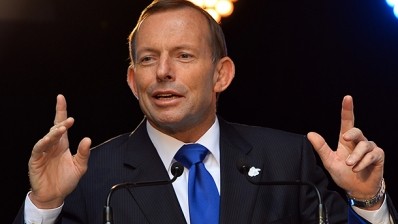Profile: Carl Gibson, CEO of Complementary Healthcare Council, Australia
Complementary medicine's hardman says it's time to focus on positives

The source of the chief executive of the Australian Complementary Healthcare Council’s good humour is in the figures from a recent CHC industry audit, which suggest that 58% of the manufacturers his body represents are expecting their market to grow over the next three years.
What’s more, having seen another report, commissioned by the US Council for Responsible Nutrition and compiled by Frost & Sullivan, which lists out the potential savings to the healthcare industry there by adopting a greater emphasis on medical prevention, Gibson wants to order something similar from the University of Western Sydney’s National Institute of Complementary Medicine for the Australian market.
According to the CRN report, America could save nearly US$4bn in net cumulative chronic heart disease-attributed cost savings between 2013 and 2020. Over US$12bn would be saved if all women over the age of 55 diagnosed with osteoporosis were to use calcium and vitamin D dietary supplements at preventive intake levels.
As Gibson sees it, a similar and more authoritative report could have a massive impact on government healthcare policy for Australia’s fast-ageing population. The government must first allocate funding for the research so the report plan is at an early stage, but it is by chipping away at things like these that the CHC is working to promote a “responsible, innovative industry, as well as trying to empower consumers to take more responsibility for their own health,” he says.
“We have a role in making sure that we retain consumer confidence in complementary medicines. But we’re only a small trade association, so we have to encourage the government to educate consumers.
“At the end of the day, we are responsible for our own health, and preventative health can relieve some of the stain on the healthcare budget in the future. Rather than dealing with chronic diseases, public money should be spent on preventative health.”
However, there are groups that would rather the complementary health industry stayed out on the fringes of healthcare policy, and the CHC is well known for calling foul on the many studies that paint complementary products as unnecessary and featuring overblown claims.
One recent report, from the University of Adelaide in February, claimed that herbal medicines are being sold with incorrect labelling and fail to comply with regulations.
It found that almost 20 per cent of the herbal remedies surveyed, including vitamins, minerals and fish oils available through supermarkets and pharmacies had not been registered with the Therapeutic Goods Administration (TGA), and that nearly 60 per cent had ingredients that did not match what was listed on the bottle or pack.
But Gibson argues that this survey looked at around just 120 products out of maybe tens of thousands of others on the market, and so claims the research methods were biased against the reality—as is often the case. “That’s the nature of the industry,” he admits.
“We’ve always had detractors and naysayers, and it doesn’t help when friends of science and medicine make a concerted effort to make sure that complementary medicines are attacked constantly.” He adds that this has been done to the point that sections of the conventional medicine lobby actively write to universities, asking them to review their courses that support complementary medicines, like naturopathy.
“That’s why I hit back: I passionately believe in this industry, and I passionately believe that our interests should be recognised and maintained. And whenever there is an injustice by friends of medicine and science, I will call it out.”
The industry does seem to have a friend in the recently elected federal government under Prime Minister Tony Abbott, who himself was once a health minister. For Gibson, whose career background has long roots in politics in his native Britain, there is plenty to work with in Canberra.
“We have a very good relationship with the new government—they’ve made it clear, ever since Tony Abbott was a junior health minister, that the prime minister understands the benefits of preventative health.
“And as an advocacy body, we have to bee seen to be campaigning for positive policies in government and changes in regulatory regimes to support preventative healthcare. We welcomed the new government because they had an understanding of the benefits of complementary medicines bring to that alternative health agenda.”
That Australia has one of the tightest regulatory regimes works both ways for the complementary industry. In terms of exporting Australian products to Asia’s vast and growing market, the industry certainly uses the fact that the TGA is one of the strictest regulators when it comes to manufacturing standards and auditing standards.
But that leaves a quandary when it comes to homegrown products in low-risk categories, who find such strict regulations burdensome.
“When it comes to Asian exports, the markets love the fact that the TGA is the strictest regulator and they have absolute confidence in Australian products, for which there is definitely a demand. But then there is the dilemma in that it is costly to have that TGA recognition of regulations on the home front.”
What’s more, there is some concern that a number of grey-market imports from Asia in particular aren’t registered with the TGA and are not on the Register of Therapeutic Goods. As a result, the CHC has been working closely with the TGA to make sure that illegal imports are captured.
“At the end of the day, the industry spends a lot of money on making sure that our products are safe and meet TGA guidelines and recommendations, but consumers also have to be sure they know a product’s efficacy and where it was made,” Gibson continues.
“If you order off the internet, you don’t know what you’re popping in your mouth. So there is very much a joint campaign with the TGA to make sure that safety standards are maintained, if not reinforced.”
According to the Productivity Commission, as much as A$12bn (US$10.75bn) in extra gross domestic product per year could be gained by reducing the burden of unnecessary red tape. To promote this, while maintaining stringency towards imports, the CHC has called on the government to “review the implementation of the current regulatory reforms to ensure appropriate ‘light touch’ regulation.”
But on the whole, things are looking good for Australian complementary healthcare, with CHC figures from last year suggesting the industry sends products valued at over A$200m (US$179m) to more than 20 countries, and exports are growing at higher rates than domestic consumption.
On a local level, the industry represents at least 400 homegrown companies that bring in around A$2bn (US$1.8bn) in annual revenues.
And then there is the report detailing the industry’s confidence in its future. No wonder Gibson is in a good mood.







